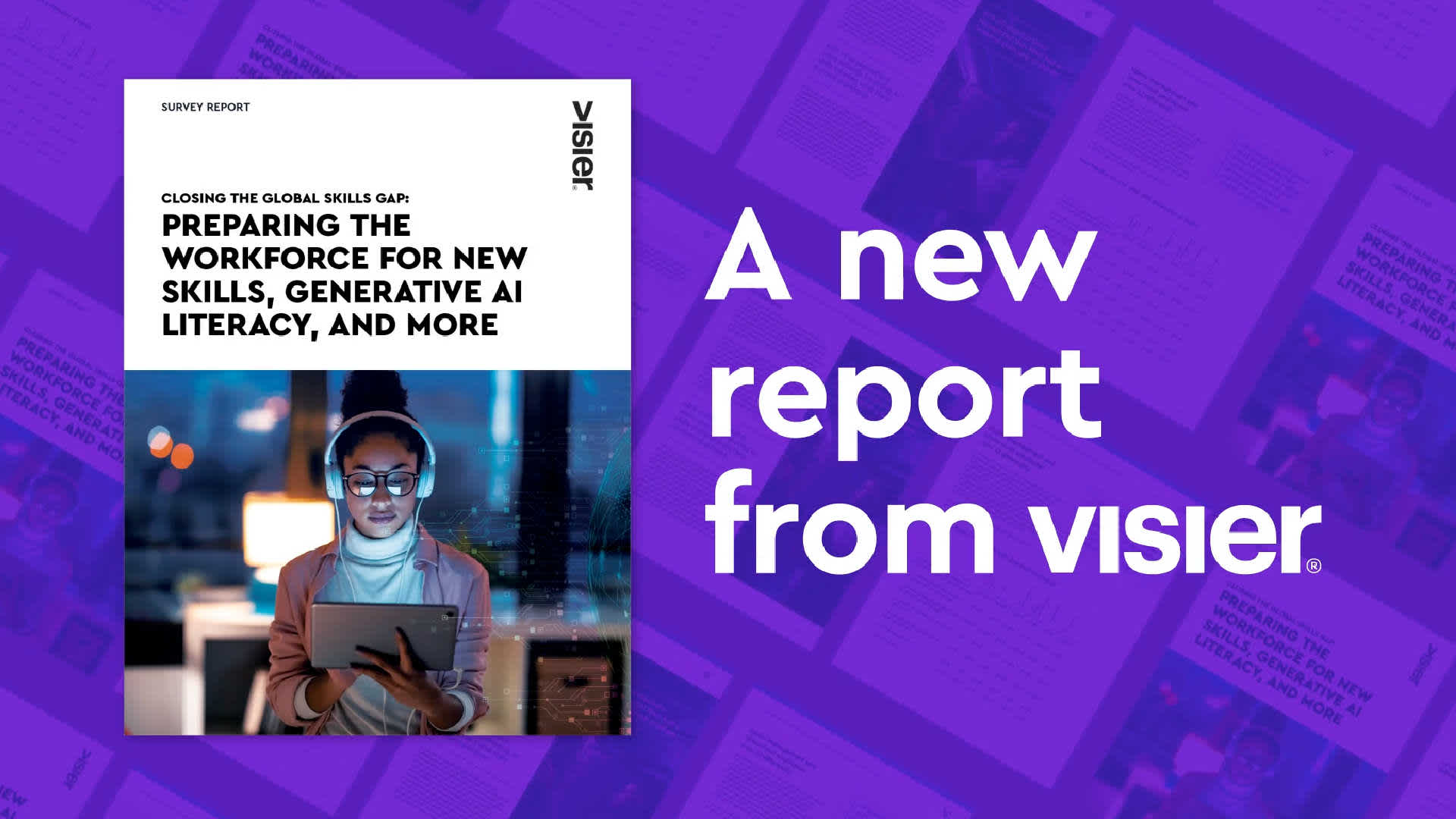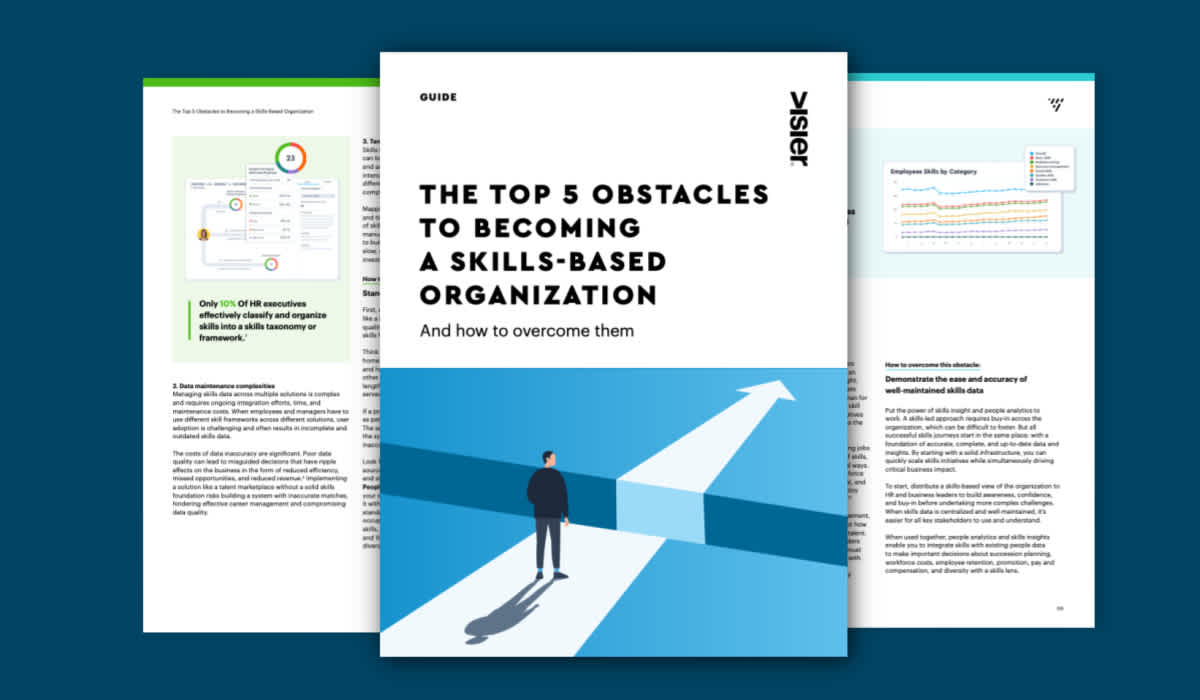A Guide to Upskilling: What It Is and How To Get Started
Employee upskilling is critical for workforce retention, growth, and strategic goal setting. Learn how to create an upskilling program here.

The time when employees would join a company and stay until they’d retire, without working on their skills, is long gone. Upskilling provides employees with the opportunity to improve their current knowledge set and abilities and learn new ones that will help them be better at their jobs.
In an ever-changing economy, creating a future-proof, resilient workforce is the only way to succeed. Upskilling is a critical tool and a win-win for everyone involved.
Your employees will get the chance to improve and learn new things constantly, staying competitive and relevant in their field. Your company will see lower turnover rates, improved productivity, performance, and job satisfaction. Here’s everything you need to know to upskill your workforce.
What is upskilling?
Upskilling means improving a person’s skills, helping them become more effective and efficient at their job, and closing skills gaps at the company. The most common way to facilitate upskilling is through learning and development programs offered in the workplace. Organizations offer specific training based on their own skill needs and the interests and growth ambitions of their employees.
Along with reskilling and cross-skilling, upskilling is a strategy that keeps employees motivated and engaged and helps reduce turnover. Plus, if you’re thinking about internal mobility and succession planning, learning and development programs are a must.

Upskilling vs reskilling vs cross-skilling
The three terms are used a lot in L&D conversations. They may sound similar, but they’re not the same.
Upskilling focuses on the employee's current skills and builds from there. An example would be a designer whose main skill is Photoshop learning to use Illustrator or other tools for vectorial design.
Reskilling focuses on learning new skills altogether. The existing skills may come in handy, but generally, the goal of reskilling is to prepare the employee for a different job than what they are currently doing. An example would be a designer learning software development with the goal of perhaps changing careers one day.
Cross-skilling focuses on learning different skills that can be applied across different functions. Take, for example, a copywriter who specializes in writing landing pages and ad copy. They could expand their skill set by learning to write copy for social media. They will still be a copywriter, but they’ll be able to work across a wider variety of projects.

Why is upskilling important?
Periodic economic upheaval caused by events like the Great Resignation, the pandemic, and recessions prove that one of the most important things a company needs is a resilient workforce. One way to do that is to create an environment that encourages employees to constantly learn and improve what they already know.
Visier surveyed 1,000 US-based full-time employees to understand what drives them to leave a company and what could make them stay.
32% of respondents said they left their job because they wanted to learn new skills, while 26% wanted more training opportunities.
Better pay also comes into play. But learning opportunities take the lead. 73% of respondents said they would leave their job for another that pays the same, but offers more learning and development opportunities. If these numbers reveal one thing, it’s that upskilling is more important now than ever.
Benefits of upskilling
Retention is a clear bonus of upskilling. But it is not the only benefit. Here are some key benefits of upskilling that demonstrate why companies should invest in this type of development.
1. Save costs
External hiring is not cheap. You need to create a good job ad, find the perfect candidates, and conduct interviews. Then there’s the onboarding phase, and waiting to see how and if the new person will integrate with the rest of the team.
If you put upskilling first, you might save some costs and take advantage of internal mobility instead. Sure, L&D programs have their costs, but in most cases, they’re cheaper than external hiring.
2. Increased productivity
Better skills come with better performance and more productivity. Upskilling gives your employees the tools they need to work smarter rather than harder. In the end, everyone wins. Employees can enjoy their work more, and the company will have better results in all the important areas.
3. Fill the skill gaps
No company wants to find itself with skill gaps. But the evolving technologies, market, and unpredictable events like a pandemic can create some gaps even in the best-prepared departments.
Upskilling is an excellent solution for that. When you have an effective L&D program in place, you can prevent skill gaps or fill them quickly in the case of unforeseeable events.

How to decide when an employee should be upskilled
Upskilling is not always a straightforward process. Sometimes you need to take a step back to see who is the best fit for it. Your top performers will most certainly come to mind. But they shouldn’t be the only ones to count.
To make the best choice, start by looking at the skills that already exist in your company. People analytics is a great tool to support you during this process. It can help you map and match people and skills, and it can turn your skill data into actionable insights.
You can also use people analytics to look at crucial information such as age, gender, ethnicity, career history, and more. This will ensure that you are distributing your upskilling resource equitably, and not leaving specific groups of employees behind.
To use the skill data you have, you need to first understand the people behind those skills. Who are they? What are their goals? How likely are they to respond well to upskilling? All this will help you find who the best people are for upskilling at any given time.
How to upskill your workforce in 4 steps
Upskilling has immense benefits for both companies and employees. But the journey to upskilling is a little longer. Here’s how to upskill your workforce in four key steps.
1. Conduct a skill gap analysis
It’s all about those skills! To know what to upskill, you need to know which skills you have and which are missing from your company.
Start by looking at your workforce and assessing your employees’ current skills. This will likely be a team effort between the HR departments, team leaders, and/or managers. Don’t forget, your employees might possess skills they’re not currently using in their jobs, so don’t just look at their job description.
Next, look at the skills you currently need and the ones you’ll need in the future. Checking your business goals for the next few years will be helpful here, as will a market analysis. Afterward, look at both sets of data and see what skills are missing from your company.
2. Set upskilling goals
Why do you want to upskill your workforce? Try to abstain from generic answers like “improving productivity”. Make your goals measurable. Improving productivity is great, but what does that mean and how will you measure it?
For example, maybe you want to incorporate a new software program within six months, obtain new certifications, or have three new products instead of two finished every month.
3. Choose the right employees for upskilling
It may seem like learning and development is great for everyone. But sometimes involving everyone in the company might not be the best strategy or use of resources.
For instance, if your goal is to incorporate a new software program for the design process, you probably won’t need to train the marketing department.
Even your designers may not all be suitable candidates. Look at their current performance level, but also at their future goals. Do they want to upskill? Or would they maybe think of changing fields altogether?
Incorporate people analytics to see the person behind the skills so that you can select the best candidates.
4. Measure progress and repeat
If you set measurable goals, knowing how well your upskilling program is progressing should be easy. Are you having the results you want? Is there something you could improve?
Upskilling is not a one-and-done deal. It is a continuous process. One area of it may be finished within a few months, like training employees to use a new software program. But that doesn’t mean you’ll never have to think of upskilling again.
Develop procedures to regularly assess the skills in your company, find skill gaps, and address them.

The bottom line
Upskilling—improving your employees’ skills to help them perform better and be more productive and competitive—is crucial in today’s ever-changing environment. It can help save costs, create a resilient workforce, and fill in skill gaps.
Upskilling isn’t always a simple process. Before you embark any employees on this journey, stop and consider who the best candidates are. Combine people analytics and skill data to see the person behind the skill and find the ones who would benefit most from upskilling.
On the Outsmart blog, we write about workforce-related topics like what makes a good manager, how to reduce employee turnover, and reskilling employees. We also report on trending topics like ESG and EU CSRD requirements and preparing for a recession, and advise on HR best practices like how to create a strategic compensation strategy, metrics every CHRO should track, and connecting people data to business data. But if you really want to know the bread and butter of Visier, read our post about the benefits of people analytics.



